The Story of Dr. Wassell

Brief Synopsis
Cast & Crew
Cecil B. Demille
Gary Cooper
Laraine Day
Signe Hasso
Dennis O'keefe
Carol Thurston
Film Details
Technical Specs

Synopsis
During World War II, the Japanese Navy cripples the U.S. cruiser Marblehead on the Java Sea. The Marblehead crew keeps the ship afloat for two days until they reach the port at Jilatjap, Java, where they are met by a Dutch hospital train commanded by former Arkansas country doctor, Navy Lieutenant Commander Dr. Corydon M. Wassell. The wounded are then taken to a hospital deep in the jungle. While Wassell treats sailor "Hoppy" Hopkins, Javanese nurse Tremartini donates her blood to save his life, and feels that she now has a permanent bond with him. In order to distract Hoppy from his pain, Wassell tells him about how a medical journal photograph of a beautiful American nurse named Madeline, who was working in China, inspired him to leave Arkansas to work as a missionary. Just after Wassell learns that thousands of Japanese soldiers have landed on Java, the hospital is hit during an air attack. Those patients able to walk take shelter in a cellar, while the immobile are placed underneath their beds. During the raid, Ping, a Chinese soldier, continues Wassell's story: When Wassell finally arrives in China and meets Madeline, they fall in love. Wassell searches for a cure to a devastating disease that claims the lives of thousands of Chinese. Wassell theorizes that the disease is carried by snails, but is unable to identify the specific snail genus. Wassell is disappointed when the hospital's board of directors names Dr. Ralph Wayne, a missionary and Wassell's rival for Madeline, as the new head of research and sends Wassell to a remote jungle outpost. A bomb blast cuts short Ping's story, and he dies when a falling beam pierces his chest. Wassell soon gets evacuation orders, but only the walking wounded are to be shipped off; the rest must remain in the jungle. Reluctant to tell the men his mixed news, Wassell mobilizes everyone and takes them to Jilatjap, but the captain of the departing ship Pecos refuses to allow the bedridden soldiers aboard, as he anticipates an enemy attack. Realizing that his debilitated men face certain death if left behind, Wassell insists on remaining with them, and thereby becomes the only high ranking American officer left on the island. With the help of Johnny, an able-bodied soldier who missed the boat, and Javanese helpers, the small troop returns to their jungle hospital, but are forced to take shelter in the cellar during a raid. Bill, a wounded officer from the Marblehead , asks Wassell to finish Ping's story: After he is sent to the jungle outpost, Wassell continues his research and finally identifies a specific genus of snail that carries the disease. Exultant, Wassell plans to propose to Madeline, but refrains from doing so when he gets a telegram informing him that Dr. Wayne has also discovered the source of the disease, and is being hailed a hero. Knowing that Wayne also wants to marry Madeline, Wassell gives up both his work and her. Back in the jungle, Wassell's prayers are answered by the arrival of a convoy of British trucks. The British commander lends Wassell a truck for his wounded and arranges to meet him at Java harbor, where a ship is leaving for Australia. Hoppy and Tremartini ride in a separate truck, which careens over the side of the road after a bomb blast. Wassell is unable to find them, and they are left to fend for themselves. Wassell and his men catch up to the British troops only to learn that all the transport ships except for the Janssen , have been sunk. The British troops remain in the jungle to fight the Japanese, while Wassell and his men return to Jilatjap to meet the Janssen . By the time they arrive at night, the Janssen has already set sail, but a lightning flash reveals that it is still in the harbor, and Wassell desperately puts his men in a boat and sails it alongside the ship. Despite the captain's orders against bringing wounded men on board, Wassell sneaks them on deck. Seeing he has no choice, the captain moves the wounded men below deck. Wassell is surprised to find Wayne aboard, and to learn that he is joined by his wife. The next day, as the crew learns that the Pecos was sunk in Java harbor, the Janssen engines suddenly go silent as Japanese bombers begin to strafe the ship. Wayne is wounded in the attack, and when Wassell sends for his wife, he discovers that she is not Madeline, who had shipped out on the Pecos . The Janssen is saved by a formation of "Flying Fortress" bombers, who defend it against further attack. In Australia, Wassell expects to be court-martialed for disobeying orders, but instead is commended by President Franklin D. Roosevelt in a radio broadcast in which he praises Wassell's efforts to keep his men alive. The survivors of the Pecos include Madeline, and she is present when Wassell is awarded the Navy's highest honor, the Navy Cross.

Director

Cecil B. Demille
Cast

Gary Cooper

Laraine Day

Signe Hasso

Dennis O'keefe
Carol Thurston

Carl Esmond

Paul Kelly
Elliott Reid

Stanley Ridges
Renny Mcevoy
Oliver Thorndike
Philip Ahn

Barbara Britton
Melvin Francis
Joel Allen

James Millican
Mike Kilian
Doodles Weaver
Lester Mathews
Ludwig Donath

Richard Loo
Davison Clark
Richard Nugent
Morton Lowry
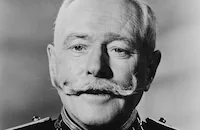
George Macready
Victor Varconi
Edward Fielding
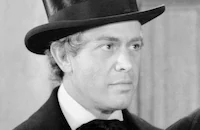
Harvey Stephens
Frank Wilcox

Minor Watson
Edmund Macdonald
William Severn
Edith Barrett
Catherine Craig

Frank Puglia
Si Jenks

Irving Bacon
Ottola Nesmith
Sybil Merritt
Maria Loredo
Loretta Luiz
Luke Chan
Oie Chan
Yu Feng Sung
Moy Ming
Hugh Beaumont

Roy Gordon
Ferdinand Schumann-heink
Charles Trowbridge
Gus Glassmire
Joe Gilbert
Albert Ruiz
Edward Earle
Allen Ray
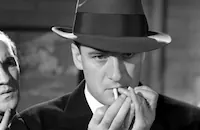
Elliott Sullivan
Isabel Cooper
Jody Gilbert
Linda Brent
Olga Maria Thunis
Hugh Prosser

Anthony Caruso
Chuck Hamilton
Sven-hugo Borg
Bruce Warren

Louis Jean Heydt
Frank Lackteen
Dave Scott
Larry Lawson
Forrest Taylor
Doris Lilly
Warren Ashe
George Lynn
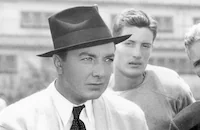
Fred Kohler Jr.
Larry Thompson
Louis Borell
Daniel De Jonghe
Sam Flint
Lloyd Whitlock
J. W. Johnston
Cyril Ring
Patrick O'moore
Jack Luden
Donald Stuart
George Eldridge
Forbes Murray
Paul Mcvey
Frank Mayo
Thomas Quinn
Oliver Follansbee
Ralph Linn
Roy Darmour
Glen Stephens
Henry Victor
Carl Neubert
Louis Arco
Gavin Muir
Richard Abbott
Will Thunis
Ivan Triesault
Frederick Brunn
Philip Van Zandt
Frederick Giermann
Tony Paton
Angel Cruz
Leota Lorraine
Mary Currier
John Mylong
Arthur Loft
Rudolph Anders
Gordon Richards
Walter Fenner
Gretl Dupont
Grace Lem
Hooper Atchley
Ronnie Rondell

Ann Doran
Stanley Price
Kenneth Gibson
Maxine Fife
Ameda Lambert
Carla Boehm
Phyllis Perry
Marion De Sydow
Betty Alden
Fred Nurney
Lane Chandler
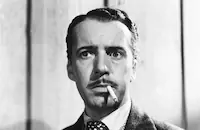
Boyd Irwin
John Meredith
Julia Faye
Mildred Harris

Greta Granstedt
June Kilgour
Beth Hartman
Gloria Dea
Forrest Dickson
Geraldine Fisette
Eric Alden
Richard Barrett
John Benson
Carlyle Blackwell
John Bogden
George Bronson
Edgar Caldwell
Tony Cirillo
James Cornell
Clint Dorrington
James Courtney
Renald Dupont
Edward Howard
Henry Kraft
Buddy Messinger
Harlan Miller
Alexander Mcsweyn
Malcomb Smith
Harry Templeton
William P. Wilkerson
Robert Wilbur
Joe Bautista
Joe Dominguez
Roque Espiritu
Rodric Redwing
Frank Elliott
Russ Clark

Griff Barnett
Isabelle Lamal
Frances Morris
Cecil Weston
Hazel Keener
Milton Kibbee
Sam Flint
William Hall
John James
William Challee
George Magrill
Rita Gould
William Forrest
Mike Lally
Jack Norton
Sarah Edwards
Crew
Harriet Altland
Roland Anderson
Max Asher
Richard Bachler
Anne Bauchens
Charles Bennett
Sidney Biddell
George H. Blandord
Robert Brower
Nacio Herb Brown Jr.
Henry Bumstead
Frank Caffey
Harry Caplan
Wilfrid M. Cline
Carl Coleman
John Cope
Marian Crist
Jack Crosby
Fred Deiterich
C. K. Deland
Cecil B. Demille
B. G. Desylva
Joe Dominguez
Leonard Doss
Hans Dreier
James Dundee
Andy Durkus
George Dutton
Farciot Edouart
Capt. Fred F. Ellis B.m.m. (ret.)
General Eugene L. Eubank
William Flannery
John Morris Foster
Hugo Grenzbach
Loyal Griggs
Dan Sayre Groesbeck
James Hilton
Wei F. Hsueh
Gordon Jennings
Elois Jenssen
Wallace Kelley
Robert King
Robert King
George Lancaster
Billie Lee
Alan Lemay
A. Lowenthall
Harry Lucenay
Jeanie Macpherson
Edwin Maxwell
Danny Mccauley
Curtis Mick
Victor Milner
Edward Movius
E. Osborne
J. Howard Payne M.d.
Elsie Peacock
Paul Perry
Arthur Pierson
Kenneth Ray
Glen E. Richardson
Arthur Rosson
Oscar Rudolph
Edward Salven
Martin Santell
George Sawley
L. Simmel Jr.
Lt. Comdr. H. D. Smith United States Navy (ret.)
B. Cecelia Smukler M.d.
William Snyder
Joseph Sternad
W. Teal
Joseph Thompson
A. Thunberg
Natalie Visart
Wally Westmore
Jelte Dirk Wiersma
Lothrop Worth
Victor Young

Videos
Movie Clip


Hosted Intro
Film Details
Technical Specs

Award Nominations
Best Special Effects
Articles
The Story of Dr. Wassell
Wassell worked as a medical missionary in China for about twelve years starting in 1913. Back in the States, he resumed a medical practice in Arkansas while also becoming a commissioned officer in the Naval Reserve. When WWII broke out, the Navy sent him to Java to treat wounded sailors. The Japanese invaded the island on Feb. 28, 1942, and Wassell was ordered to evacuate himself and all walking wounded; the twelve immobile men under Wassell's care were to be left behind to be captured by the Japanese. Wassell wouldn't leave them so he defied orders and tried to put them on a ship with the rest of the men, but they were denied boarding. Still determined to save them, Wassell stayed behind to lead them across the island to another port and another ship; all the while, the Japanese were steadily advancing. Eventually he got everyone aboard a ship to Australia - and in the end, Wassell was awarded the Navy Cross for his deed.
Captivated by Wassell's feat, DeMille immediately composed a telegram to Roosevelt's secretary, asking permission to adapt the story into "a magnificent inspirational motion picture." Not only was the answer "yes," but the Navy approved the transfer of Wassell from Australia to Hollywood to help out on the production. Wassell would spend a year in Hollywood, getting paid by Paramount all the while for his services. (Apparently, Wassell had no idea why he was being sent stateside until he met DeMille.)
Paramount hired Lost Horizon novelist James Hilton to turn the Wassell story into a novel which could be used as source material, thereby freeing the studio of worry over any lawsuits or challenges. Operating on a $2.7 million budget and a 95-day shooting schedule (with much location work done in Mexico), DeMille turned out a typically flamboyant and melodramatic tale. Describing his story, the director gushed, "It's a Goodbye, Mr. Chips [1939] for the Navy. The reason the story is great and different [is that] while it is war, it isn't a question of killing; it's a story of life saving rather than life taking."
It was also still a Hollywood movie designed to sell tickets, with 42-year-old Gary Cooper portraying the 57-year-old Wassell, a fictitious romantic subplot injected into the story, and even a release date timed for propaganda value. The Story of Dr. Wassell happened to open in New York on D-Day, June 6, 1944 (it also opened early in L.A. and Little Rock), but by design it opened nationwide on Independence Day, July 4, 1944. A nice touch was that July 4 was even Wassell's own birthday.
The Paramount publicity department tried to stir up the box office in the same entertaining ways as with any other picture. One publicist, for instance, made up the following statement and had it attributed to co-star Laraine Day talking about kissing Gary Cooper: "It was like holding a hand grenade and not being able to get rid of it. I was left breathless. Gary kisses the way Charles Boyer looks like he kisses."
Laraine Day was appearing on loan from MGM. She found this especially satisfying because DeMille had once insulted her abilities. According to author Robert Birchard, Day recalled that her agent had tried to get her a tiny role in DeMille's The Buccaneer (1938) back when her career was just beginning. DeMille told Day's agent "that he wouldn't consider it, that I had no talent and shouldn't even be on the lot. Now it's 1942 and I'm under contract to MGM and DeMille can't find anybody in all of Hollywood to play a nurse. I'd been playing nothing but nurses in Dr. Kildare pictures, and so I got the part. Of course, he didn't remember the earlier incident."
Of her time on the set of Dr. Wassell, the actress said "DeMille was pleasant to work with because we never really worked with him. An assistant did all the rehearsing, then he'd come in, run through it once and shoot it. The only time he really directed was during the crowd scenes. Then he was in complete control - of course he had a number of assistants working with him."
The critics were mixed on The Story of Dr. Wassell. Bosley Crowther complained in The New York Times that the movie's comedic and romantic interludes "messed up a simple human story." Furthermore, he wrote, "DeMille has worked in enough pyrotechnics to leave the audience suffering from shell shock." As it turned out, those pyrotechnics helped earn the film an Oscar® nomination for Best Special Effects.
All the proceeds that Wassell received from the film were donated to a hospital for the deaf and blind in Arkansas. Melvin Francis, one of the survivors of the actual incident on Java, appears as himself.
Producer: Sidney Biddell, Cecil B. DeMille, Buddy G. DeSylva
Director: Cecil B. DeMille
Screenplay: Charles Bennett, James Hilton, Alan Le May, Commander Corydon M. Wassell
Cinematography: Victor Milner, William E. Snyder
Film Editing: Anne Bauchens
Art Direction: Roland Anderson, Hans Dreier
Music: Victor Young
Cast: Gary Cooper (Dr. Corydon Wassell), Laraine Day (Madeleine), Signe Hasso (Bettina), Dennis O'Keefe (Benjamin Hopkins), Carol Thurston (Tremartini), Carl Esmond (Lt. Dirk Van Daal).
C-140m.
by Jeremy Arnold
Sources:
Jeffrey Meyers, Gary Cooper: American Hero
Robert Birchard, Cecil B. DeMille's Hollywood

The Story of Dr. Wassell
Quotes
Trivia
Notes
The film's title card reads: "Gary Cooper in Cecil B. DeMille's The Story of Dr. Wassell." Opening credits also include the following acknowledgment: "Based upon the story by Commander Corydon M. Wassell, USN (MC), as related by him and fifteen of the wounded sailors involved...and also upon the story by James Hilton." In his autobiography, Cecil B. DeMille noted that he closed the film with a statement informing the audience that Benjamin Hopkins, on whom the character "Hoppy" was based, survived the war. This epilogue was not seen in the viewed print, however.
According to DeMille's autobiography and other published contemporary accounts, Paramount was inspired to make this film after President Franklin D. Roosevelt made a April 28, 1942 radio broadcast, in which he detailed Wassell's heroic deed. A portion of Roosevelt's speech reads as follows: "[Wassell] was a missionary, well known for his good works in China....he entered the service of his country and was commissioned a Lieutenant Commander in the Navy. Dr. Wassell was assigned to duty in Java, caring for wounded officers and men of the cruisers Houston and Marblehead, which had been in heavy action in the Java Seas. When the Japanese advanced across the island, it was decided to evacuate as many as possible of the wounded to Australia. But about twelve of the men were so badly wounded that they could not be moved. Dr. Wassell remained with these men, knowing that he would be captured by the enemy. But he decided to make a desperate attempt to get the men out of Java....He first had to get the twelve men to the sea coast-fifty miles away....The men were suffering severely, but Dr. Wassell kept them alive by his skill, and inspired them by his own courage....On the seacoast, he embarked the men on a little Dutch ship. They were bombed and machine-gunned by waves of Japanese planes. A few days later Dr. Wassell and his little flock of wounded men reached Australia safely..." A New York Times article and DeMille's autobiography both noted that Paramount commissioned author James Hilton to write a book about Wassell, on which the film would later be based. The published book was also used as a treatment for the screenplay.
Material in the Paramount Collection at the AMPAS Library reveals the following information about the production: In an unusual arrangement with Paramount, Cecil B. DeMille was not paid for his work as producer/director on this film. Although Dr. Corydon Wassell is not listed as a technical advisor onscreen, Paramount paid for him to live in Los Angeles between October 1942 and October 1943, and noted in a memo that the studio's "arrangement with the Navy and Dr. Wassell is that he will be available to us as long as we want to keep him in connection with the...production." According to Hollywood Reporter, Wassell was to appear in a mob scene in the picture. Albert Dekker was initially cast in the film, but withdrew because he felt the part was unsuitable for him. Various scenes were shot at the following locations: Metapa, Tapachula and other Mexican locations; Placerita Canyon and San Diego, CA; Pyote and Victoria, TX; and Florida. According to a Hollywood Reporter news item, background shots were taken in Mexico City.
Hollywood Reporter news items add the following about the production: The role of Wassell was initially offered to Joel McCrea. Lynne Overman was cast as "Commander Bill Goggins," but died before production began, and was replaced by Stanley Ridges. Actors Alan Ladd, Robert Preston, Henry Wilcoxon and Bruce Lester were cast in the film at various points, but withdrew after being called into military service. Dennis O'Keefe replaced Preston and Ladd as "Hoppy," and Henry Wilcoxon was first cast as "Dr. Ralph Wayne." Others considered for the role of Hoppy were Richard Whorf, James Brown, Dana Andrews, Walter Reed, Barry Sullivan, Michael O'Shea and Alan Baxter. Veronica Lake, Elena Verdugo, Yvonne de Carlo and Simone Simon were tested for the role of "Tremartini," and Maureen O'Hara, Marjorie Reynolds, Ruth Hussey and Pamela Blake were considered for the role of "Madeline." Eighteen-year-old Melvin Francis, who was among the wounded men rescued by Wassell, appears as himself in the film. Cecil B. DeMille's son Richard was slated for a small part in the film; however, he was inducted into the Army and therefore does not appear in the film. Laraine Day and Signe Hasso were borrowed from M-G-M. A news item noted that DeMille was considering using a plot device featuring "gremlins." The War Production Board approved a $206,908 budget for sets for the film, well above the $5,000 limit previously established for all films made during wartime. Paramount built a replica of the Dutch ship Janssens based on blueprints and photographs of the original ship. Five percent of the film's gross earnings were donated to the Navy Relief Society as part of Paramount's agreement with the Navy. In addition, the proceeds of the premieres were donated to the Naval Aid Auxiliary. Gary Cooper and Carol Thurston reprised their roles in a Lux Radio Theatre broadcast on 23 October 1944.
Although some critics hailed The Story of Dr. Wassell as a great film, others were critical of DeMille's presentation of Wassell's story. Bosley Crowther in his New York Times review of the picture echoed the sentiments of many when he noted that the film was "a hopped-up melodrama about a young and romantically disposed doc who shepherds a group of wounded out of Java under the most fantastic circumstances imaginable. True, such a thing did happen. But not this way, we'll bet a hat!...The public...is vastly aware of the realities, the mammoth ordeals of this war....So it is not in the least surprising that folks should start in resentful shock when DeMille (or anyone) shows them hoopla warfare in a Technicolor blaze." Farciot Edouart, Gordon Jennings and George Dutton were nominated for an Academy Award for Best Special Effects for their work on the film. The film was voted one of The Film Daily Ten Best Pictures of 1944.

Miscellaneous Notes
Released in United States 1944
Released in United States on Video May 14, 1996
Released in United States 1944
Released in United States on Video May 14, 1996














